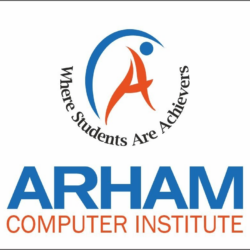COURSE DESCRIPTION
Java is one of the world’s most important and widely used computer languages, and it has held this distinction for many years. Unlike some other computer languages whose influence has weared with passage of time, while Java’s has grown.
Java is a high level, robust, object-oriented and a secure and stable programming language but it is not a pure object-oriented language because it supports primitive data types like int, char etc.
Java is a platform-independent language because it has runtime environment i.e JRE and API. Here platform means a hardware or software environment in which anapplication runs.
Java codes are compiled into byte code or machine-independent code. This byte code is run on JVM (Java Virtual Machine).
The syntax is Java is almost the same as C/C++. But java does not support low-level programming functions like pointers. The codes in Java is always written in the form of Classes and objects.
As of 2020, Java is one of the most popular programming languages in use, especially for client-server web applications.Its has been estimated that there are around nine million Java developers inside the world.
Curriculum
- 15 Sections
- 122 Lessons
- 90 Days
- Introduction11
- 2.1Programming language Types and Paradigms.
- 2.2Computer Programming Hierarchy.
- 2.3How Computer Architecture Affects a Language ?
- 2.4Why Java ?
- 2.5Flavors of Java.
- 2.6Java Designing Goal.
- 2.7Role of Java Programmer in Industry.
- 2.8Features of Java Language.
- 2.9JVM –The heart of Java
- 2.10Java’s Magic Bytecode
- 2.11Language Fundamentals
- The Java Environment:5
- Basic Language Elements:4
- Object Oriented Programming16
- 5.1Class Fundamentals.
- 5.2Object & Object reference.
- 5.3Object Life time & Garbage Collection.
- 5.4Creating and Operating Objects.
- 5.5Constructor & initialization code block.
- 5.6Access Control, Modifiers, methods
- 5.7Nested , Inner Class &Anonymous Classes
- 5.8Abstract Class & Interfaces
- 5.9Defining Methods, Argument Passing Mechanism
- 5.10Method Overloading, Recursion.
- 5.11Dealing with Static Members. Finalize() Method.
- 5.12Native Method. Use of “this “ reference.
- 5.13Use of Modifiers with Classes & Methods.
- 5.14Design of Accessors and Mutator Methods
- 5.15Cloning Objects, shallow and deep cloning
- 5.16Generic Class Types
- Extending Classes and Inheritance9
- Package7
- Exception Handling:8
- Array & String :8
- Thread7
- Applet5
- A Collection of Useful Classes16
- 12.1Utility Methods for Arrays
- 12.2Observable and Observer Objects
- 12.3Date & Times
- 12.4Using Scanner
- 12.5Regular Expression
- 12.6Input/Output Operation in Java(java.io Package)
- 12.7Streams and the new I/O Capabilities
- 12.8Understanding Streams
- 12.9The Classes for Input and Output
- 12.10The Standard Streams
- 12.11Working with File Object
- 12.12File I/O Basics
- 12.13Reading and Writing to Files
- 12.14Buffer and Buffer Management
- 12.15Read/Write Operations with File Channel
- 12.16Serializing Objects
- GUI Programming8
- Event Handling9
- Networking Programming6
- Database Programming using JDBC3

